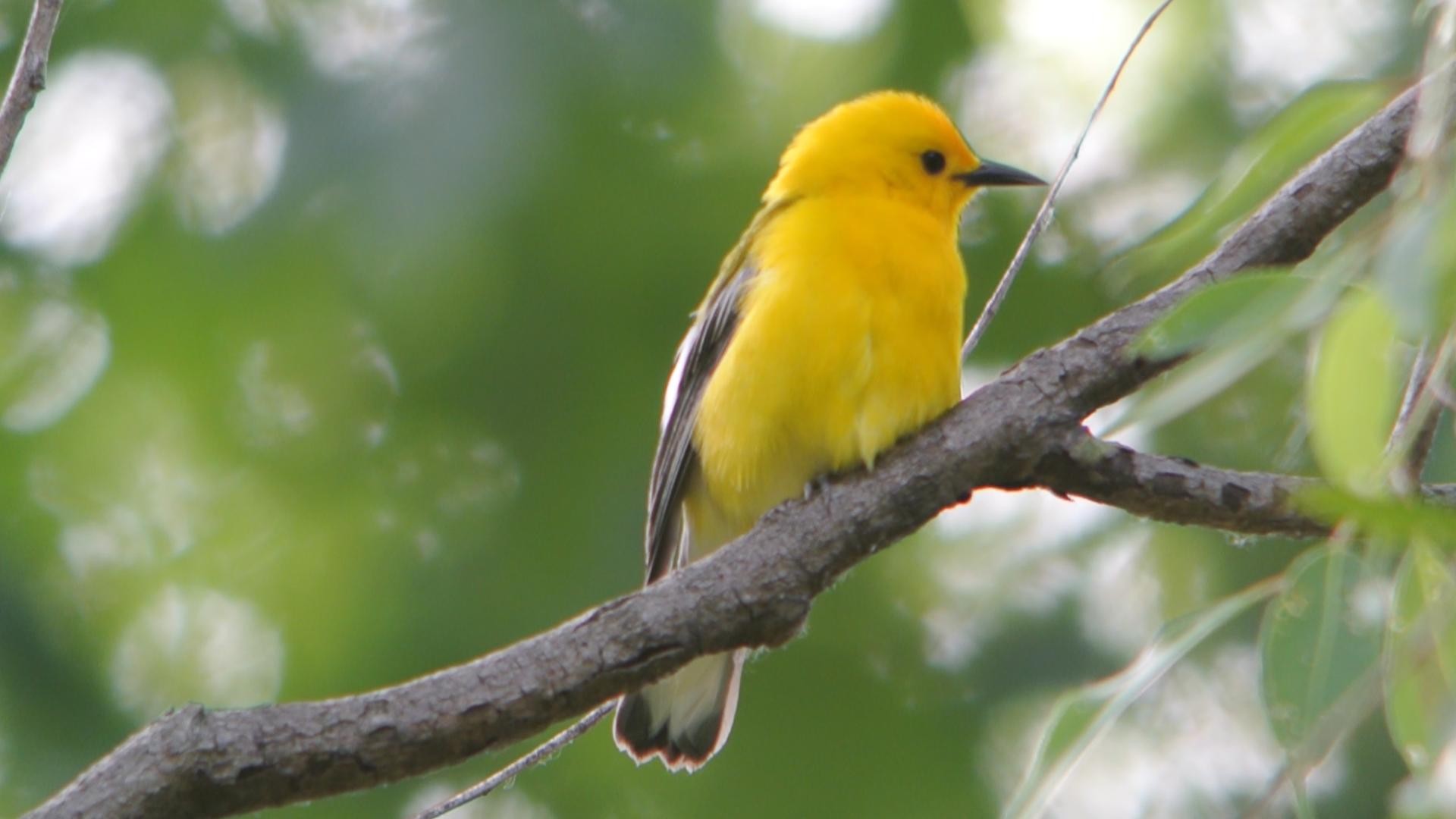Prothonotary Warbler
A species of Prothonotary Warblers Scientific name : Protonotaria citrea Genus : Prothonotary Warblers
Prothonotary Warbler, A species of Prothonotary Warblers
Botanical name: Protonotaria citrea
Genus: Prothonotary Warblers
Content
Description People often ask General Info
 Photo By Andy Reago & Chrissy McClarren , used under CC-BY-2.0 /Cropped and compressed from original
Photo By Andy Reago & Chrissy McClarren , used under CC-BY-2.0 /Cropped and compressed from original Description
The prothonotary warbler is 13 cm (5.1 in) long and weighs 12.5 g (0.44 oz) and has a wingspan of 8.75 in (22 cm). It has an olive back with blue-grey wings and tail, yellow underparts, a relatively long pointed bill, and black legs. The adult male has a bright orange-yellow head. Females and immature birds are duller and have a yellow head. In flight from below, the short, wide tail has a distinctive two-toned pattern, white at the base and dark at the tip. 
Size
13 cm (5.25 in)
Colors
Green
Yellow
Gray
Life Expectancy
4 years
Nest Placement
Cavity
Clutch Size
3 - 7 eggs
Incubation Period
1 - 3 broods
Number of Broods
12 - 14 days
Nestling Period
9 - 10 days
Feeding Habits
Prothonotary Warbler predominantly consume insects such as beetles, caterpillars, mayflies, and ants. They also feed on spiders, moths, flies, grasshoppers, leafhoppers, and mollusks like snails. In the nonbreeding season, prothonotary Warbler's diet expands to include fruits and seeds.
Habitat
The prothonotary Warbler primarily dwells in expansive hardwood swamps and flooded forests in southeast North America, with a preference for areas of over 250 acres near water bodies. During migration, prothonotary Warbler utilizes coastal marshes and groves as rest stops. In winter, prothonotary Warbler's habitats extend to mangrove swamps and streamside woods in the West Indies, Central America, and northern South America, favoring moderate climates ideal for such wetland ecosystems.
Nest Behavior
Prothonotary Warbler starts nest building with the male proposing sites, yet females decide and finish the nest in 3–8 days. Egg-laying and both parents partake in chick-rearing post-hatch.
Nest Characteristics
Prothonotary Warbler nests in cavities like abandoned woodpecker holes, often near water, using moss, rootlets, and bark to construct a moss-lined cup of 2 inches width. Nests are found 2–33 feet high.
Dite type
Insectivorous
People often ask
General Info
Feeding Habits
Bird food type
Bird Feeder Type

Platform
Sounds
Call
Recording location: United States
Song
Recording location: United States
Song
Recording location: United States
Behavior
The prothonotary Warbler exhibits a methodical foraging behavior, often seen hopping in the understory or climbing up tree trunks to glean insects. The male's unique territorial display includes placing moss in multiple potential nesting cavities before performing a fluttering flight to attract a female. Once a nesting site is chosen by the female, she begins constructing the nest. Defensively, both sexes are robust, snapping bills or directly assaulting intruders. Pair bonds are monogamous during breeding season and may persist to subsequent seasons, with nesting site fidelity reinforced by reproductive success. Although they face predation and parasitism challenges by raccoons, snakes, and Brown-headed Cowbirds respectively, their non-territorial winter behavior contrasts this; they forage in groups and may integrate into mixed-species flocks.
Distribution Area
It breeds in hardwood swamps in extreme southeastern Ontario and eastern United States. It winters in the West Indies, Central America and northern South America. It is a rare vagrant to western states, most notably California. 
Species Status
Not globally threatened.

 Photo By Andy Reago & Chrissy McClarren , used under CC-BY-2.0 /Cropped and compressed from original
Photo By Andy Reago & Chrissy McClarren , used under CC-BY-2.0 /Cropped and compressed from original Scientific Classification
Phylum
Chordates Class
Birds Order
Perching birds Family
New world warblers Genus
Prothonotary Warblers Species
Prothonotary Warbler